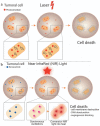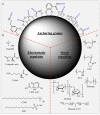Superparamagnetic Iron Oxide Nanoparticles (SPION): From Fundamentals to State-of-the-Art Innovative Applications for Cancer Therapy
- PMID: 36678868
- PMCID: PMC9861355
- DOI: 10.3390/pharmaceutics15010236
Superparamagnetic Iron Oxide Nanoparticles (SPION): From Fundamentals to State-of-the-Art Innovative Applications for Cancer Therapy
Abstract
Despite significant advances in cancer therapy over the years, its complex pathological process still represents a major health challenge when seeking effective treatment and improved healthcare. With the advent of nanotechnologies, nanomedicine-based cancer therapy has been widely explored as a promising technology able to handle the requirements of the clinical sector. Superparamagnetic iron oxide nanoparticles (SPION) have been at the forefront of nanotechnology development since the mid-1990s, thanks to their former role as contrast agents for magnetic resonance imaging. Though their use as MRI probes has been discontinued due to an unfavorable cost/benefit ratio, several innovative applications as therapeutic tools have prompted a renewal of interest. The unique characteristics of SPION, i.e., their magnetic properties enabling specific response when submitted to high frequency (magnetic hyperthermia) or low frequency (magneto-mechanical therapy) alternating magnetic field, and their ability to generate reactive oxygen species (either intrinsically or when activated using various stimuli), make them particularly adapted for cancer therapy. This review provides a comprehensive description of the fundamental aspects of SPION formulation and highlights various recent approaches regarding in vivo applications in the field of cancer therapy.
Keywords: SPION; cancer therapy; drug delivery; iron oxide nanoparticles; macrophage polarization; magnetic hyperthermia; reactive oxygen species; theranostics.
Conflict of interest statement
The authors declare no conflict of interest.
Figures









References
Publication types
LinkOut - more resources
Full Text Sources

